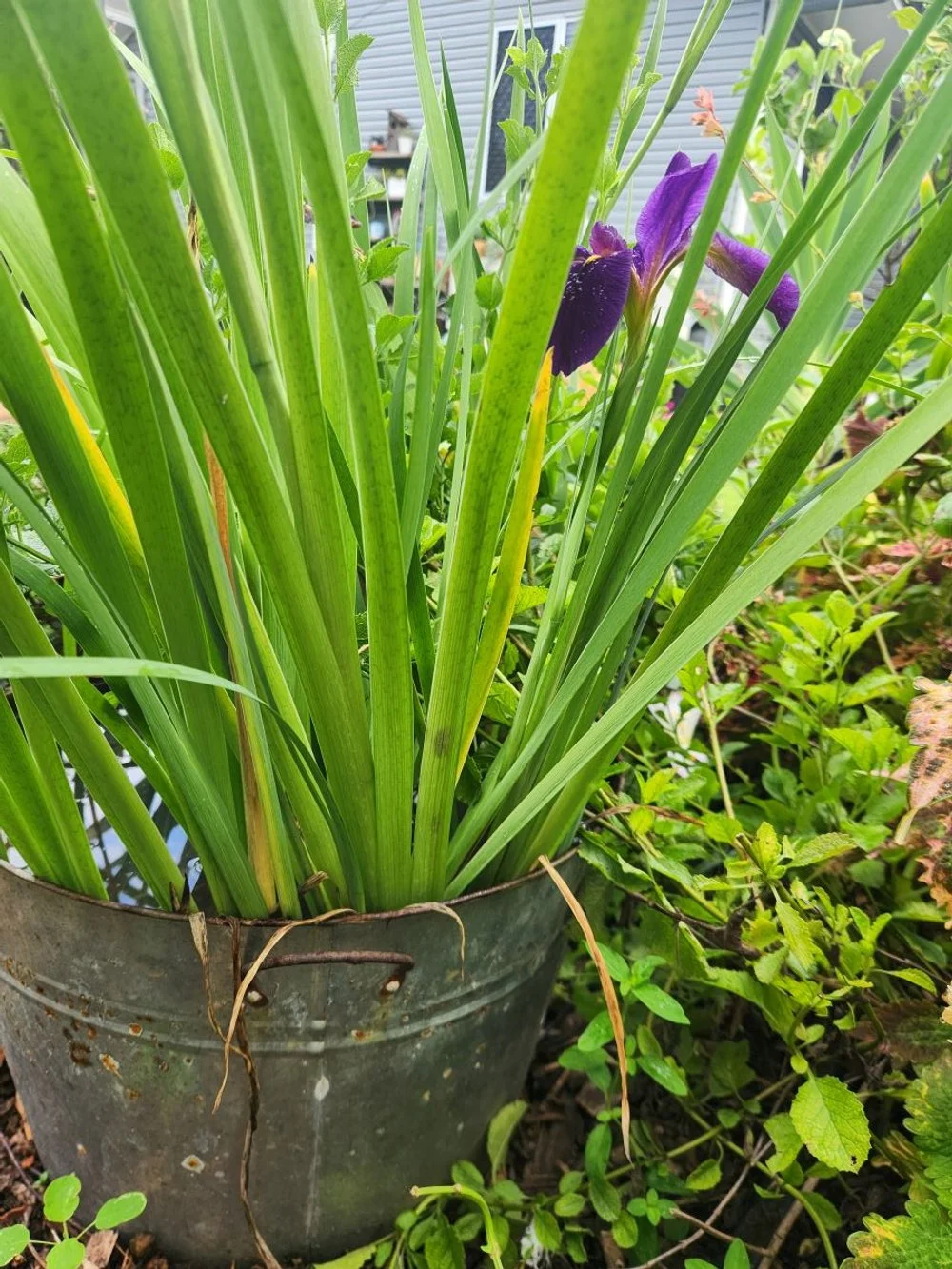By the bayou
Way down in the deep south of my garden I have a swamp in a bucket. And in that swamp in a bucket, I have Louisiana Irises, and they are bloomin’ beautiful right now.
Louisiana Irises are native to - you guessed it - Lousiana, and grow in swamps and bayous. For those of you who are interested, swamps are foresty land areas that happen to be covered in water, while bayous are more like slow-moving creeks. A marsh, on the other hand, is like a swamp, but more grass, less trees. And they’re all wetlands. Confusing!
There are five species that make up ‘Louisiana irises’, all of which occur across the state of Louisiana, but prefer different sorts of habitat. These various habitats all happen to exist within short distances of each other only in the south of Lousiana. The five species are all capable of interbreeding with each other (but not other iris species) which has resulted in many natural hybrids. This is also the reason we have such a wide range of cultivated hybrids. The five species are the blue flowered Iris brevicaulis (zig zag iris), I. hexagona (dixie iris) and I. giganticerulea (giant blue iris – look at the species name, can you figure it out?) and the red flowered I. fulva (copper iris) and I. nelsonii. I. nelsonii is the rarest of the five and has the most restricted habitat. Breeding them with each other we now have a rainbow of colours: white, blues, purples, pinks, reds, yellows, including various bicoloured flowers
Louisiana irises go dormant over winter, which is the best time to plant the rhizomes, but if you can find them for sale now, they’ll be flowering, and you can pick your colour. They flower best in full sun and as I mentioned before I grow mine in a murky bucket of water. A non-draining pot filled with soil and kept moist, or the edge of a pond also works. Think bog! (or swamp, marsh or bayou….)


